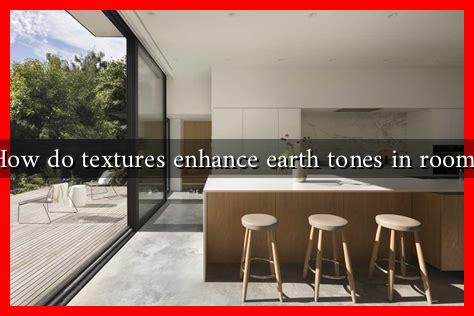-
Table of Contents
- How Do Textures Enhance Earth Tones in Rooms?
- The Power of Earth Tones
- Understanding Texture in Interior Design
- How Textures Enhance Earth Tones
- 1. Creating Contrast
- 2. Adding Depth and Dimension
- 3. Enhancing Natural Light
- 4. Evoking Nature
- Case Studies: Successful Applications of Textures with Earth Tones
- Conclusion
How Do Textures Enhance Earth Tones in Rooms?
In the world of interior design, the interplay between color and texture can dramatically influence the ambiance of a space. Earth tones—those warm, natural hues inspired by the colors of the earth—are particularly effective when combined with various textures. This article explores how textures enhance earth tones in rooms, creating a harmonious and inviting environment.
The Power of Earth Tones
Earth tones encompass a range of colors, including browns, greens, ochres, and muted reds. These colors evoke a sense of calm and connection to nature, making them popular choices for interior spaces. According to a study by the Color Psychology Institute, earth tones can promote feelings of stability and comfort, which is why they are often used in homes and offices.
Understanding Texture in Interior Design
Texture refers to the surface quality of materials, which can be perceived visually or through touch. In interior design, texture plays a crucial role in adding depth and interest to a space. Different textures can evoke various emotions and responses, making them essential for creating a well-rounded design. Here are some common types of textures used in interior design:
- Smooth: Glass, polished wood, and metals create a sleek, modern look.
- Rough: Stone, brick, and unfinished wood add a rustic, organic feel.
- <strong=Soft: Fabrics like velvet, linen, and cotton introduce warmth and comfort.
- Hard: Materials like concrete and tile provide a sturdy, industrial vibe.
How Textures Enhance Earth Tones
When combined thoughtfully, textures can elevate the beauty of earth tones in several ways:
1. Creating Contrast
Textures can create visual contrast that enhances the richness of earth tones. For example, pairing a smooth, glossy surface with a rough, matte finish can draw attention to the color palette. A polished wooden table against a textured stone wall can highlight the warm browns of the wood while adding depth to the overall design.
2. Adding Depth and Dimension
Incorporating various textures can add layers to a room, making it feel more dynamic. For instance, a soft, woven rug can soften the look of a hardwood floor, while textured throw pillows can add interest to a neutral earth-toned sofa. This layering effect creates a more inviting and comfortable atmosphere.
3. Enhancing Natural Light
Textures can also interact with natural light in unique ways. For example, a textured wall can cast interesting shadows and reflections, enhancing the overall color of the room. Light bouncing off a rough surface can create a warm glow that complements the earth tones, making the space feel more alive.
4. Evoking Nature
Earth tones are inherently connected to nature, and using natural textures can reinforce this connection. Materials like jute, sisal, and reclaimed wood not only add warmth but also bring the outdoors inside. This organic feel can create a serene environment that promotes relaxation and well-being.
Case Studies: Successful Applications of Textures with Earth Tones
Several designers have successfully utilized textures to enhance earth tones in their projects:
- Studio McGee: Known for their modern farmhouse aesthetic, they often combine soft textiles with rustic wood and stone to create inviting spaces.
- Amber Interiors: This design firm frequently uses layered textures, such as velvet cushions and woven rugs, to enhance the warmth of earth-toned palettes.
- Emily Henderson: A prominent stylist, she often emphasizes the importance of texture in her designs, showcasing how it can elevate simple earth tones into sophisticated interiors.
Conclusion
Incorporating textures into a room with earth tones can significantly enhance its aesthetic appeal and emotional impact. By creating contrast, adding depth, enhancing natural light, and evoking a connection to nature, textures breathe life into earth-toned spaces. As interior design continues to evolve, understanding the relationship between color and texture will remain essential for creating harmonious and inviting environments. Whether you are redecorating your home or designing a new space, consider how textures can elevate your earth-toned palette and transform your rooms into serene sanctuaries.

